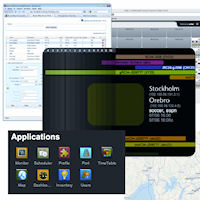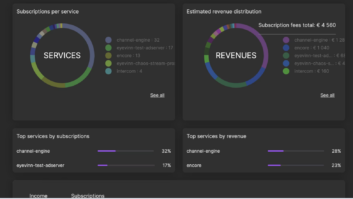
Professional video transport is moving from static, point-to-point connections to a highly dynamic world where setup and teardown on demand can meet network needs that can change within minutes. Whether managing the IP-based media network of a service provider or a broadcaster’s optical network, managed video services systems can simplify and add intelligence to critical service provisioning, connection management, analytics, network inventory, protection and performance management functions, while ensuring continuous, contribution-quality video transport.
Designed to take full advantage of data network flexibility, these open platform systems are modelled on the world’s best web-based information systems. The new generation of video service management systems use a highly distributed architecture for high availability and cost efficiency, and play a critical role in reducing requirements for human expertise as they are extremely intuitive, easy to use, and operate from one console.
The potential of fibre optic technology can be maximised with the use of ring architecture variations with add/drop/pass capability for guaranteed redundancy within a fully managed environment. Redundancy is achieved by sending each signal in separate layers running in opposite directions around the ring, making it extremely robust and high performance. The platform functions as a distributed routing control system for the network, running on geographically distributed redundant hardware servers and controlling and managing the network’s nodes and layers from a web-based console.
Managed video services systems address the complexity of video over IP services by adding a network abstraction layer, allowing users to provision and monitor services without having to consider detailed configuration settings in each network element. The platform should auto-detect available video resources and allow the user to set up connections by selecting the appropriate video end-points and service profile. The system adds value by allocating the necessary resources without overbooking, efficiently managing bandwidth.
A recent application of Nevion VideoIPath for the Swedish Football Association illustrates the impact of a video services platform. The media production arm of the association has small onsite production studios at 16 stadiums, creating news stories, clips, interviews, and game-day updates. Advanced connection management via VideoIPath enables the central production facility to use only three decoders in support of the 16 different locations by dynamically shifting the connections when and where they are needed, whether scheduled in advance or ad-hoc.







